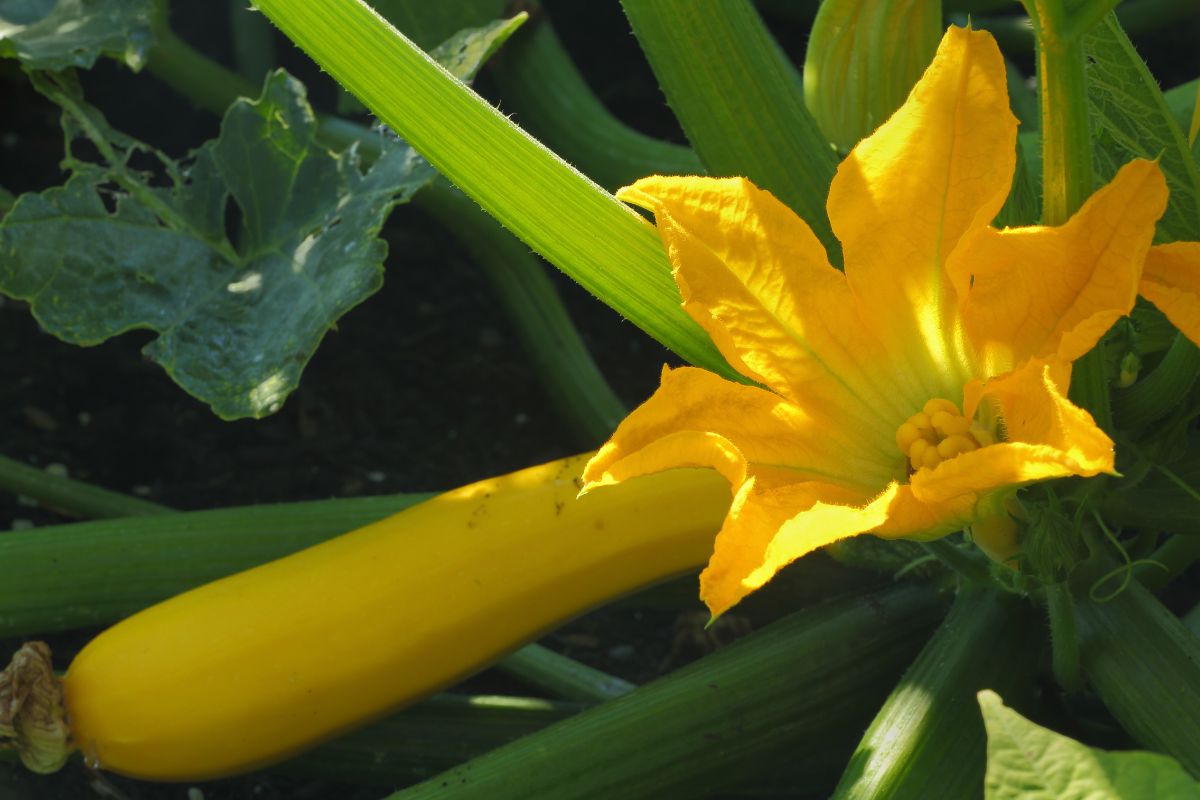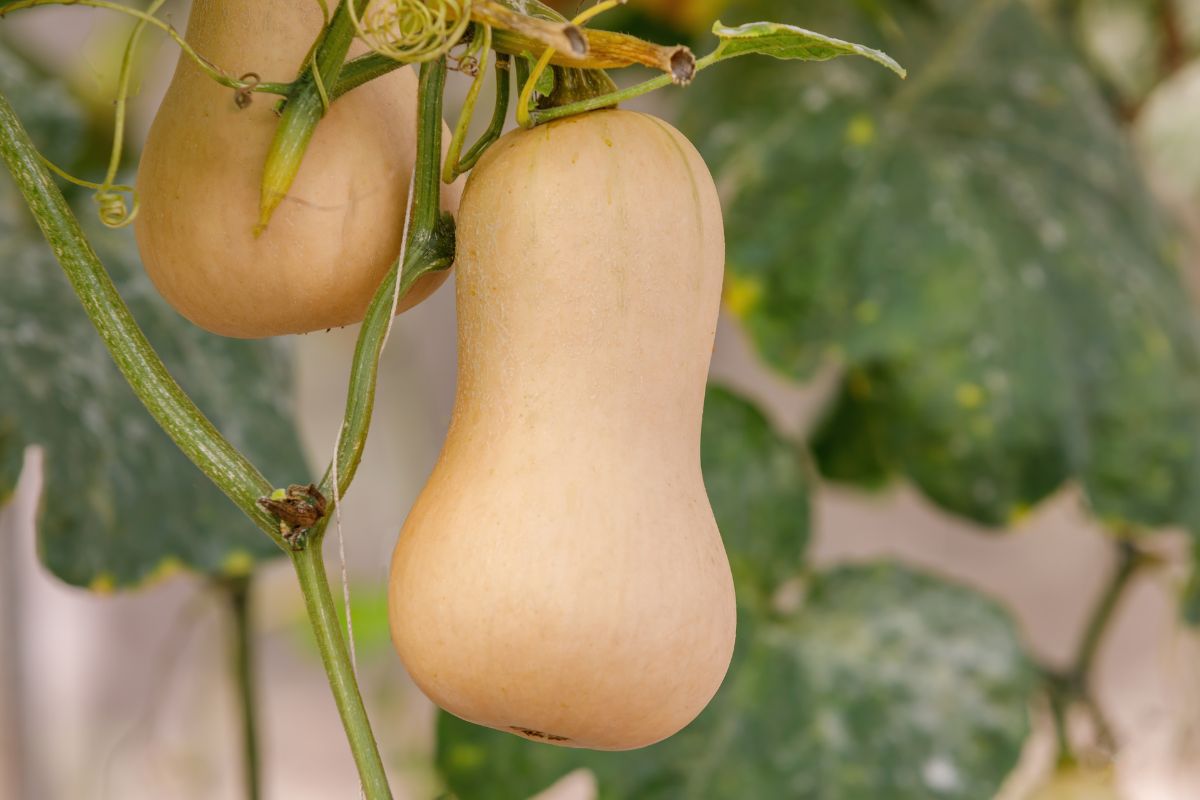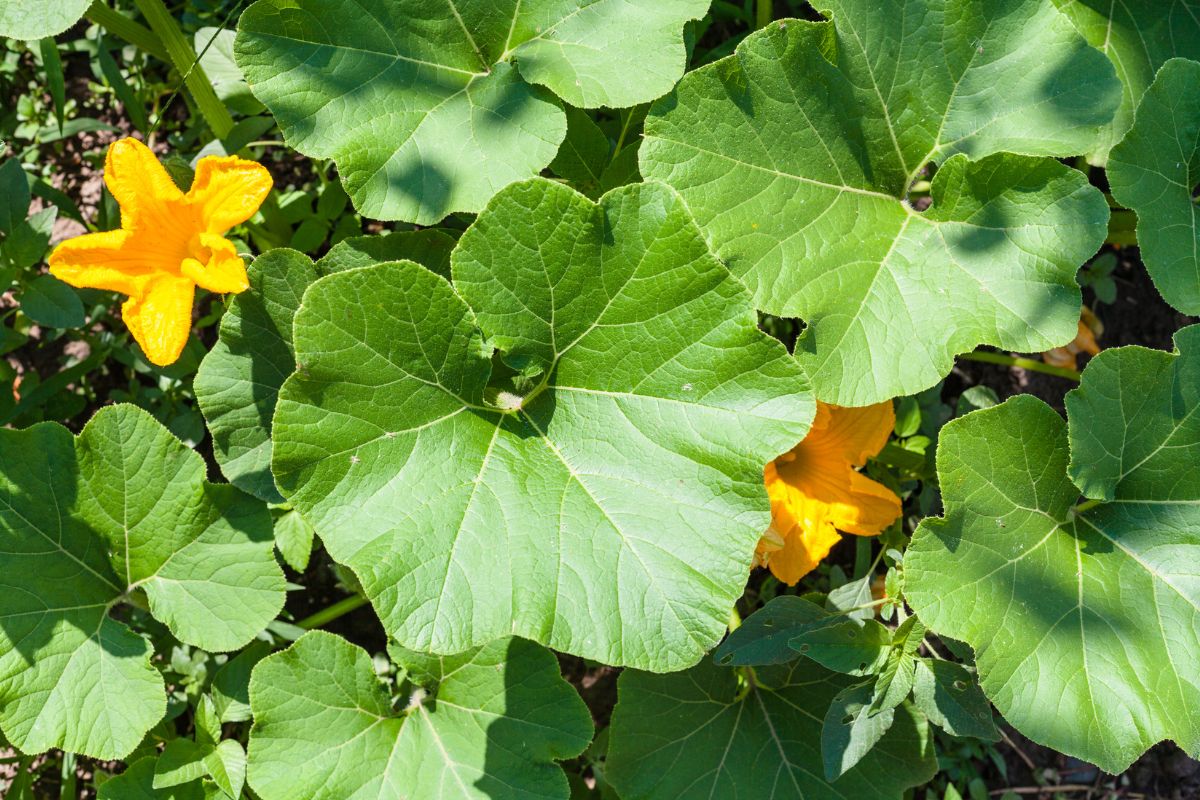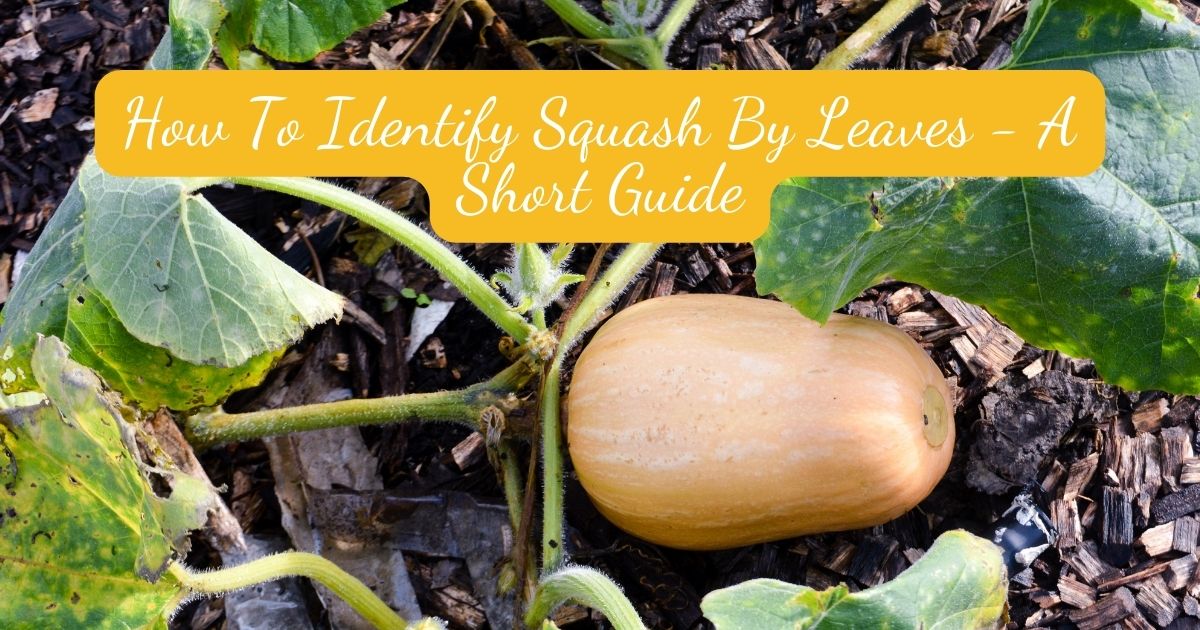Is Zucchini and Squash the Same Thing?
You are in the right place if you’re trying to understand how to identify squash by leaves. Once you know how to identify them, it becomes easier to differentiate one squash plant from another.
“Squash” refers to a group of plants within the gourd family classified into summer and winter squash. Zucchini is a summer squash measuring nearly a meter in length. Therefore, zucchini is squash, but not all squash is zucchini.

How to Identify Squash by Leaves
Squash plants originate from the Cucurbita genus, which has a very popular fruit. Squash plants like the Cucurbita Moschata, Maxima, Mixta, and Pepo are well known for their sweet fruit. Squash are herbaceous plants that are either trailing vines or bush-like morphology.
Squash plants are herbal plants that have bush-like or trailing vines. The vines have long and large vines that can climb by swirling on surfaces with their tendrils. The bushes take up less space than the vines and have spiky leaves. Most people get confused with the different squash plants. However, it is pretty easy to identify squash plants by their leaves.
For example, some leaves are mottled and rounded, whereas others are lobed. You can also identify squash plants by their seeds, size, weight, and color. Let’s take a look at the various squash plants’ identification:
Maxima
Unlike the Atlantica, this squash plant has smooth and plain leaves. This characteristic makes it one of the easiest squash plants to identify. Its fruits do not have long necks and are instead blocky or rounded.
The most popular colors of this squash are orange and green, with some exceptions being peach-colored! Unlike other squash plants, which have U-shaped flowers, this one has round flowers. Their flowers are also notably small.
Mature maxima fruits can be orange, peach, or green, while immature ones may be colored yellow. The other outstanding characteristic of this plant is its weight. The maxima fruit can weigh above 40 pounds (18.14 kilograms). Therefore, if your squash weighs 40+ pounds (18.14 kilograms), it’s probably a maxima.
The last way to identify a maxima squash is through the seeds, which are usually large or extra large. The seeds are also brown. It is pretty easy to identify this type of squash if you are keen.
Mixta
The next squash plant we will learn to identify is the mixta. These are famous for having jagged and sometimes heavily mottled leaves. The leaves can also be deeply lobed. This plant has a cock like a stem and star-shaped, rolled-up leaves.
As for the color of the fruit, mixta squash produces white, yellow, orange, or green fruits. The fruits are often necked or roundish and can weigh a maximum of pounds. Unlike the butternut squash, this plant has large seeds with broken skin.
Moschata
Moschatas squash is also commonly referred to as butternut squash. The easiest way to identify butternut squash plant leaves is through their shape and texture. These plants have smooth, mottled leaves. Their flowers are round, and the stems flared with five sides which connect them to the fruit.
Another giveaway is that fully moschata squash is usually tan in color. However, young butternut squash may be dark green, light green, or buff. The fruit shape is necked, elongated, or blocky.
Other than the butternut squash leaves, the other simple way to identify this plant is through the seeds. The moschata squash seeds are small and pale with dark edges. A fully matured squash plant can reach a maximum of 30 pounds (13.61 kilograms).
Oaxacan
This squash plant has sharp-toothed, indented leaves. Both the flowers and stem are star-shaped with five sides. The most outstanding feature of this squash is that its fruit can have five different colors: red, yellow, green, white, or peach.
In terms of shape, Oaxaca squash can be round, elongated, or blocky. A fully matured Oaxacan squash weighs between 30-35 pounds (13.61 to 45.88 kilograms). Compared to other squash plants, Oaxacan seeds are flatter and larger.
Pepo, Atlantic
The leaves of this squash plant are deeply lobed with light mottling. Their leaves are prickly, like the zucchini squash, and round. Atlantic squash fruits can either be green, yellow, or red. The fruit is round, blocky, or necked and weighs between three to five pounds. The other way to identify this squash is through the seeds, which are quite small.
What Does a Squash Plant Look Like?
The easiest way to know how squash plants look is by the leaves. Most squash plants have large and round or oblong-shaped leaves. Their stems have four leaves on each side. Squash plants have round and cork-like stems. Most mature squash fruits are present in shades of orange, green, and peach.
Squash plant leaves feature 5 to 7 lobes and grows on strong, hairy stems with twisted tendrils. Most squash plants grow as trailing vines on the trellises or the ground. They have vibrant yellow flowers when in bloom.

The Characteristics of Squash Leaves
Most gardeners can identify squash plants by leaves, but if you can’t, you will find this article very helpful. Most squash plants have characteristics that make them look almost similar. Scientists have grouped squash leaves in the following ways:
- Squash plant leaves have an alternate leaf pattern on stems.
- These plants have simple leaves.
- Most quash plant leaves are palmately lobed.
- Squash plant’s leaves are exstipulate
- Squash plant leaves are medium to large-sized. ( Length 20 to 25 centimeters (7.87 to 9.84 inches) and 15 to 25 width centimeters (5.91 to 9.84 inches)
- The leaves are bright green and roughly textured.
The Importance of Squash Leaves
Squash leaves are such an essential part of squash plants. Besides helping you identify the types of squash plants, leaves will also tell you the health status of your squash plant. Here are the importances of squash leaves to gardeners:
The Health Status of the Squash Plant
By looking at squash plant leaves, you can tell whether the plant is healthy. Squash plant leaves are like thermometers alerting you of potential health issues your plants could be having. If the plant has discolored leaves, it is an indicator that it is stressed. Therefore you should supply it with relevant additional nutrients.
The Temperature
Most squash leaf edges will discolor from olive green to brown if there is a sudden temperature drop. This discoloration occurs if the soil temperature goes below 62 degrees Fahrenheit (16.67 degrees Celsius) or the general temperature is at 62 degrees Fahrenheit (16.67 degrees Celsius)
Common Squash Diseases and Pests
Squash plants suffer from various pests and diseases. Prevention is the best line of defense against these diseases and pests in your garden. For squash plants, it is advisable not to remove row covers until the flowers appear: this allows the plant to get a healthy, good head start.
It is advisable to also regularly scout your plants for pests and diseases to catch any symptoms early. Even with these measures, diseases and pests still attack our gardens! Here are some common ones to watch out for in squash plants:
Squash Pests
Squash Bugs
Squash Bugs invade all squash plants. Both nymphs and adults suck plant juices, causing damage to the squash, which can cause a reduced harvest. Nymphs are green when young and become darker as they mature. Adult squash bugs are brownish-black, flat-backed, and have a higher crawling speed. These bugs cause wilting and yellowing of squash leaves.
Prevention
The best way to eliminate squash bugs is to scrape off the eggs and pick the mature ones by hand. That’s because these bugs are resistant to most pesticides. If they multiply a lot, you can eliminate them using traps or by laying row covers on your squash plants.
The best way to trap them is by placing newspapers and boards on the ground overnight. The bugs are likely to hide here, and you can lift the board and dispose of them in the morning. You may also eliminate bugs by spraying your plants with dishwashing soap and water.
Squash Vine Borer
Squash vine borers are the most feared pest on squash plants. These red-bodied, wasp-like moths lay their eggs around the stem near the soil line. Adult moths do not affect squash plants as much as larvae.
The larvae hatch in 7 to 24 days, and the hatchlings bore into and feed on the stem and sometimes the fruit. Since they take in most of the nutrients, the leaves will become yellow and wilted;
Prevention
When eliminating vine borers, it is vital to act quickly. If they have already bored into the fruit or stem, it may not be possible to reverse the damage. However, you will save your squash plant if you can identify the eggs before they hatch.
The best way to prevent this pest is to check your plants regularly. This way, you can take the necessary action quickly if you notice any larvae. Scraping the eggs off, combined with a bacterial spray, can also do the trick!
Squash Diseases
Bacterial Wilt
As its name implies, this disease causes the leaves of squash plants to wither and wilt. It usually occurs just as the plants are starting to develop vines, which is tragic. The bacteria cause the leaves to look dull and wilt during the day but recover at night. After some time, the leaves will die.
Prevention
Unfortunately, there is no known treatment for bacterial wilt. The best thing to do is to remove the affected plants and dispose of them well. To avoid spreading, do not dispose of them in your compost. You can use the trash instead. The faster you get rid of the afflicted plants, the better.
Downy Mildew
Powdery mildew is one of the most common fungal diseases in squash plants. This disease first appears as whitish spots, quickly spreading to cover the stem, leaves, and flower buds. The Infected leaves are usually dry and shrivel, which exposes fruit to sunburn. This exposure can cause a decrease in fruit size and poor texture.
Prevention
The first way to prevent this infection is by ensuring your squash plants are at a good distance from each other. Being too close together can inhibit airflow, encouraging the spread of downy mildew. For this same reason, you should also remove any weeds near your squash plants. Generally speaking, giving your plants room to breathe is the best way to prevent this disease.
If your squash plants are already infected, you may buy organic pesticides that contain sulfur as the critical ingredient. You can also eliminate the downy mildew by spraying your plants with baking soda and water.
FAQs on Squash Identification
How Can I Know if I Have a Squash Plant?
Pulling up the leaves is the simplest way to tell if you have this plant. Squash plant leaves are oblong-shaped or large and round. Most squash plants also have four leaves on both sides of the stem. If the plant you are trying to identify has small leaves with sharp tips, it is likely to be a pumpkin vine.
How Do the Leaves Grow at First?
During the first year, they will come up as a tiny, greenish-white stem with a few leaves. They usually will flower in late spring towards early summer. Eventually, squash leaves develop three lobes, all the same in size.
The first two lobes have smaller, darker veins that run side by side to the center vein of the leaf. The third lobe is the widest and has no dark veins.
Is Zucchini the Same as Zucchini Squash?
This is one of the most asked questions about zucchini. That’s because most people get confused by these two. The answer is Yes. Zucchini and zucchini squashes are the same thing.

Final Thoughts
Now that you know how to identify the various types of squash leaves, you may as well grow them! As you grow your squash, look out for the pests and diseases discussed above.
Keep your squash healthy through proper watering, feeding, and regular checks. With this practice, you will be able to keep the pests and diseases of summer squash in check. Eventually, you will reap a good, healthy harvest!
